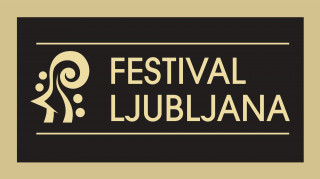Important information
Presentation of the monograph “Sizifovsko lépo: portret Uroša Rojka” [Sisyphean Beauty: A Portrait of Uroš Rojko]
Author of the book: Leon Stefanija
Uroš Rojko (b. 1954) tends to be quite frank and forthright, and full of energy. He is an active composer and clarinettist with a certain assertiveness about him – this is probably what anyone who knows Uroš Rojko at least superficially would say about him.
I include myself among those who know Rojko from a distance, as it were. As an enthusiastic musicology student and music critic on the Delo newspaper writing about his Sinfonia concertante in the first half of the 1990s, I was greatly taken by the piece. I was enchanted by the dramaturgical purity that allowed all the sonic colour of the work to come sparkling through. Years later, when I complimented Rojko on the work in person, he commented that the Sinfonia concertante wasn’t so “good” and that presenting a different, “better” composition, one aimed at a more cultivated audience, was easier abroad. Although his words seemed understandable, and it goes without saying that musical tastes differ, it nevertheless seemed to me worth maintaining the curiosity that gave rise to this book: what does such sonic energy derive from and what effect does it have?
Rojko has lived between Germany and Slovenia since 1983. This long experience of a “cultural split”, which he often refers to as the impossibility of comparing musical life in Slovenia and musical life in Europe, today actually seems the only comprehensible explanation of modern Western global culture. The responses of the environments in which he moves with all his human – and musical – characteristics are a good indication not only of the criteria used to evaluate his music but also of attitudes towards the creation of music today.
The relationship between the creation of music and responses to the music created is, in fact, what led me to reflect on Rojko’s music. His is an oeuvre which – like the majority of musical oeuvres – is evidence of musical thinking that is “always alike yet never the same”. The more completely we attempt to “capture” it through our ears and via the notes into a uniform story, the more it eludes analytical description. The impression that Rojko’s music leaves on a listener can of course vary, although it is probably difficult for an observer to overlook certain constants. These constants are well summed up by something that happened at a public talk Rojko gave on “Music and Religion” at Ljubljana’s Cankarjev Dom on 18 April 2001. After the composer had offered an exhaustive presentation of his conception of the world and his artistic views, referring several times to the importance of organisation in musical composition and the methods used for this, an audience member thanked him for writing such simple, plain, direct, effective and – in her view – attractive music. With an evident mixture of surprise and satisfaction, Rojko thanked her for the compliment and found himself unable to offer a proper explanation of her comment. It is not self-evidently understandable that his music – rigorously formulated, complex in its compositional structure and demanding to perform – often has a simple effect on the listener.
Accounts of formal complexity and sensual simplicity are (in all variants of both qualities, including contradictory ones) so typical that they seem to be almost exclusive to all the various modernisms of the last century. They are in fact ancient, and they are also important in non-European musical cultures, particularly those of India, to which some aspects of Rojko’s oeuvre “returned” me. Not only that but some characteristics of Rojko’s artistic activity prompted me to raise questions about the interpretation of music as a cultural property, and also to doubt the usefulness of the idealistic view of music as “pure” art, to uncover the stratification of modernisms, avant-gardism and progressive music. In short: his oeuvre encouraged me to re-examine the relationships between the individual and the cultural environment from which he draws and which at the same time plays a part in shaping him.
Rojko’s work does not, in fact, only demand attention because of the way he uses instruments and their acoustic qualities, stylistic history and a range of classic modernist musical poetics. His compositional approach also brings with it elusive poetological impulses which, as artistic aspirations, do not lead to stylistic provisions or semantic approximations but which draw, in the full sense of the word, on an expressionistic “inflectional” feeling, even though in the technical sense they originate from the tradition of the period in which the composer was born. The connection between creative aspirations and compositional solutions in Rojko’s work is not an obvious one (something that also applies to numerous other modern oeuvres), still less is it rectilinear: the former in fact put questions to the answers offered by the concrete solutions adopted in every series of works or even in each composition separately.
Such a view naturally brings methodological quandaries: how to approach the analysis of a stream of sound that at practically every step offers obstacles to interpretations of the development of the sound and assumes the burden of the essentially Romantic poetics of musical substance – the poetics of a pure, autonomous, true musical enunciation that bows to no compositional “school” or “trend”, even though it is immediately clear that it has a series of roots.
The material that I began collecting more or less systematically in the late 1990s and have been intensively studying for the last five years lent itself nicely to division into the three principal questions that represent the three chapters of my monograph on Uroš Rojko: Who is he? What does he do? And of course: How does he work? The first chapter – Who is he? – grew out of a piecing together of biographical fragments, which Rojko then supplemented, not only to give a complete picture of his own life but also to offer a kind of miniature fresco of the musical culture of the late twentieth and early twenty-first century in Slovenia and the surrounding region. The second chapter – What does he do? – contrasts two views of his work: his personal view and the view offered by critical writing on his music. The starting point is an analysis of his musical poetics, as offered by the composer himself in the texts accompanying his compositions and in conversations, reflections, broadcasts and letters. The analysis of these views is followed by an analysis of critics and commentators, as a complementary view of work created in a period that is remarkably dynamic but at the same time barely moving. Rojko’s words and reviews of his compositions are collected together in the monograph Akademik Uroš Rojko: skladatelj o svojem delu in odzivi nanj [Uroš Rojko: The Composer on His Work and Responses to It], which may be consulted online at http://slovenskaglasbenadela.ff.uni-lj.si. The third chapter – How does he work? – presents the composer’s workroom. It is a concise summary of this thoughts and techniques, illustrated with the help of two compositions from an extensive oeuvre that now runs to almost 180 works.


